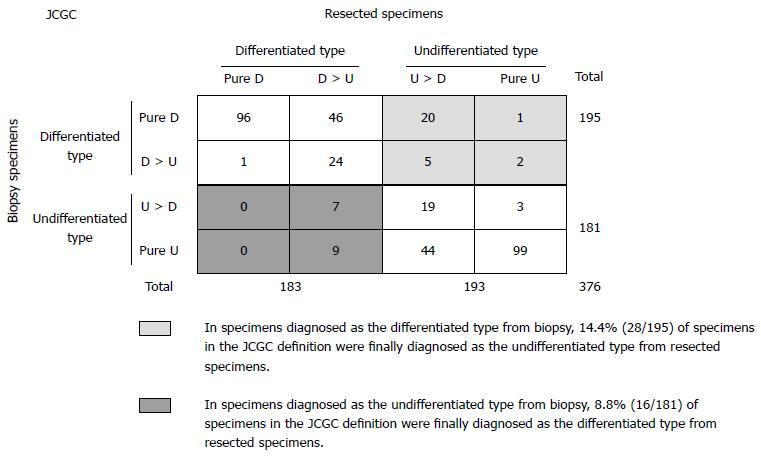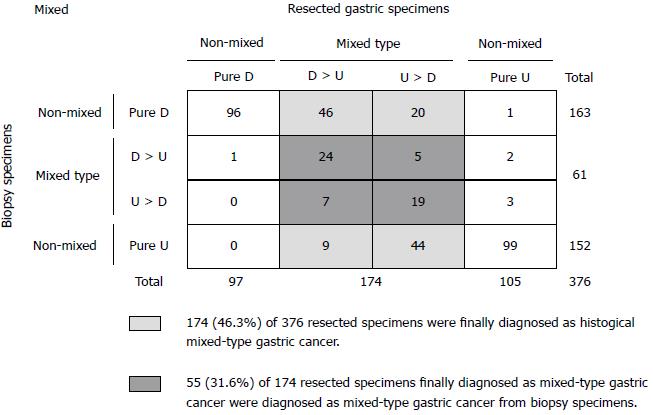Copyright
©The Author(s) 2015.
World J Gastroenterol. Apr 21, 2015; 21(15): 4673-4679
Published online Apr 21, 2015. doi: 10.3748/wjg.v21.i15.4673
Published online Apr 21, 2015. doi: 10.3748/wjg.v21.i15.4673
Figure 1 Comparison of each discrepancy in the histologic type between biopsy and resected specimens with the Japanese Classification of Gastric Carcinoma.
Pure D group: A pure differentiated component with no undifferentiated component; D > U group: A differentiated-predominant mixed type a < 50% undifferentiated component; U > D group: An undifferentiated-predominant mixed type with a > 50% undifferentiated component; and pure U group: A pure undifferentiated component with no differentiated component.
Figure 2 Comparison of each discrepancy in the histologic type between biopsy and resected specimens in the tumor-node-metastasis classification.
Pure D group: A pure differentiated component with no undifferentiated component; D > U group: A differentiated-predominant mixed type with a < 50% undifferentiated component; U > D group: An undifferentiated-predominant mixed type with a > 50% undifferentiated component; and pure U group: A pure undifferentiated component with no differentiated component.
Figure 3 Comparison of detected histologic mixed-type gastric cancer rates between biopsy and resected specimens in the Japanese classification of gastric carcinoma and tumor-node-metastasis classification.
Pure D group: A pure differentiated component with no undifferentiated component; D > U group: A differentiated-predominant mixed type with a < 50% undifferentiated component; U > D group: An undifferentiated-predominant mixed type with a > 50% undifferentiated component; and pure U group: A pure undifferentiated component with no differentiated component.
- Citation: Komatsu S, Ichikawa D, Miyamae M, Kosuga T, Konishi H, Shiozaki A, Fujiwara H, Okamoto K, Kishimoto M, Otsuji E. Discrepancies in the histologic type between biopsy and resected specimens: A cautionary note for mixed-type gastric carcinoma. World J Gastroenterol 2015; 21(15): 4673-4679
- URL: https://www.wjgnet.com/1007-9327/full/v21/i15/4673.htm
- DOI: https://dx.doi.org/10.3748/wjg.v21.i15.4673











